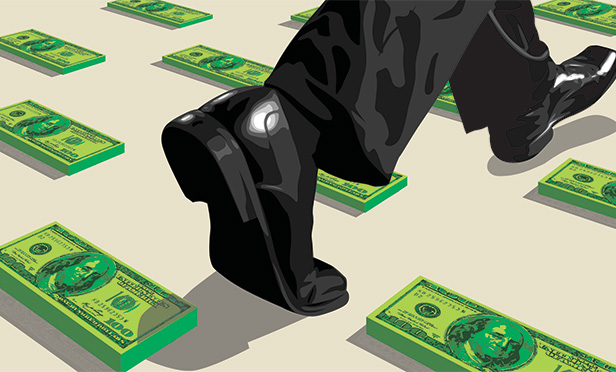

Even with increased market volatility, there is a lot of money looking for acquisitions in a very hot market: RIAs. In 2017, there were 152 deals, according to DeVoe & Co. Dealbook, while the first two quarters of 2018 had 81 deals, slightly behind last year's pace.
"There's great momentum in the independent space," said Sean Keenan, a director at BNY Mellon's Pershing Advisor Solutions, during its RIA Symposium in Chicago. "Growth and consolidation is being fueled by external capital. Inflow of capital is playing a major role in the consolidation of our industry, as experienced capital partners enhance, expand and professionalize the industry. Firms have more options than ever before when it comes to capital."
These capital sources include private equity, private investors, family offices, aggregators and banks, he said. "A recent study showed there were 60 private equity firms out there today ready to do deals with RIAs in the marketplace," he said.
Keenan picked the brains of two merger experts: Peter Raimondi, founder and CEO of Dakota Wealth, an independent investment firm for high net wealth individuals and an acquirer of RIAs, and Todd Thomson, co-founder and chairman of Dynasty Financial Partners, an investment and technology platform for independent advisors.
Both Raimondi and Thomson have veteran status in M&As. Raimondi founded The Colony Group in Boston in 1986, which he leveraged to $1 billion in AUM with 600 clients over 20 years. His next company, Banyan Partners, was founded in 2006 and was an early contender in the M&As of RIA businesses. He sold the company in 2014 to Boston Private Wealth for $60 million and launched Dakota Wealth earlier this year.
Dynasty was launched in 2010 with the purpose to help RIAs with technology, Thomson said. He is the former CFO of Citibank and former CEO of Citibank's $10 billion global wealth management division. He also worked on M&As while with GE Capital and Bain & Co.
Keenan began by asking why RIAs need capital. Thomson replied that "the most common reason we see a need for capital is M&As, and the second most common is as a lubricant to allow a transition from generation one to generation two. In a lot of cases that's difficult to do with just internal capital." He added that a third reason is because RIA owners have their capital tied up in an illiquid asset and don't want to sell it, but do want to provide liquidity to owners and partners.
Raimondi agreed, but cautioned that "the structure of why one needs capital needs to be investigated first … If I came across $5 million in capital, what would I use it for? Maybe nothing, but if there's a goal to [buy] out a retiring partner or to make an acquisition to provide a tuck-in opportunity, then the capital has some value. You have to decide how much you want to pay for that." He added that taking outside capital could give away an RIA's control of the firm or upside potential.
An RIA needs to "understand first what you need [outside capital] for and understand how much you need," Thomson said. "A lot of mistakes can be made, and if you make a mistake in an acquisition and you use outside capital, it becomes a bigger mistake."
Two things can go wrong in bringing in outside capital if a firm has never done so before, Raimondi said. "First, you can buy the wrong firm or execute that acquisition improperly and wish you hadn't done it, and secondly, you now owe the bank or partner a lot of money." Another challenge is that outside capital might not "share the same goals as you," Raimondi said.
"[Dakota's] goal is to create long-term wealth for us and our clients," he said. "A PE investor in a firm would have a five-year runway. We don't. Goals set up this divergence automatically. [PE firms may] want to cash out just when we are getting our stride."
Thomson interjected that "There's lots of flavors of capital. They come from different sources. … All have their own interests and have the ability to add to or subtract from your ability to run your firm well. Aligning what you want to do with your capital partner is critical." Raimondi related that Banyan had third-party capital, and "we sold the firm before we used the capital, so a third of the proceeds we received [for the sale] went to the third-party provider."



